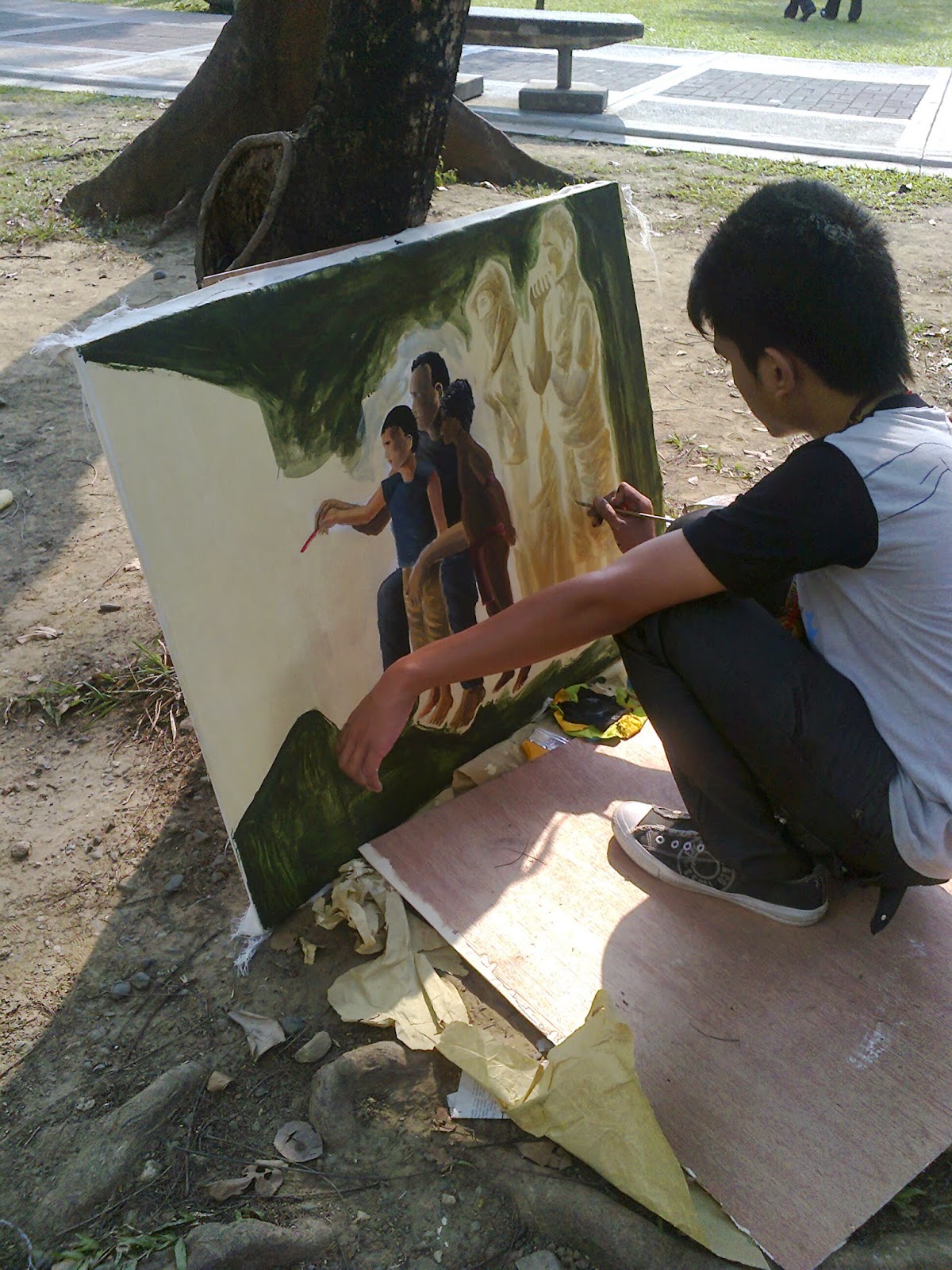Dr Abe V Rotor
Living with Nature School on BlogPaaralang Bayan sa Himpapawid (People's School-on-Air) with Ms Melly C Tenorio
738 DZRB AM Band, 8 to 9 evening class, Monday to Friday
Author demonstrates use of pastel colors. Civil Service Commission, QC (circa 2002)
An arch of trees, watercolor
Red fish in acrylic; children's art workshop at the former St Paul Museum

Author conducts summer art workshop for children at National Food Authority, QC
Art is for both young and old. Art is not a matter of “right or wrong.” It is theory, and it is your own. This is what is known as expression. Art is expression. A holistic one because it takes many faculties to create one - from logic to imagination, from visual to touch, traditional to contemporary.
Group work takes away boredom, it is collectively inspiring and challenging. But work with your own thoughts, imagination, pace.
But first, how do you begin?
1. You need only three primary colors - yellow, red and blue. Plus a lot of white and a little black. You can create all the colors of the rainbow. And you can do more in various hues and shades.
2. Red and yellow make orange; yellow and blue, green; blue and red, brown or purple. If you combine the three primary colors in equal proportion, you’ll get black.
3. Secondary colors lead you to tertiary colors. If you get lost you can trace it back to secondary. And you will not deviate from your color scheme.
4. White makes any color lighter: red to pink, yellow to cream, navy blue to sky blue, black to gray, orange to tangerine.
5. Black darkens colors. It is used to make shades and shadows. Contrast. If too much, your painting become drab, even muddy.
6. You need simple tools. Hardware paintbrushes 1/2” to 3” wide are relatively cheap. For artist brushes, buy from bookstores and art supplies. Get flat brushes - smallest 1/16”, biggest 1”). Get one or two round brushes. Because latex is water based, you need only few brushes. You can wash them while paint is still fresh.
Experiment, don’t be afraid. Take advantage of the natural characteristics of paints and other mediums, like cohesiveness, immiscibility, blending, slow or quick drying, etc.
7. Use disposable palette board such as cardboard and plywood. You can make your own canvas. Canvas is sold by yard from upholstery stores. You can make several paint canvases from a yard of 60” wide canvas. You can use illustration board. For murals I use marine plywood 1/2” to 3/4” thick, 4 ft by 8 feet.
8. Do not be afraid to experiment. Try finger painting. Palette painting. Paint as you imagine and feel. Don’t be exacting, unless your subject requires it.
9. Foundation or primer is the same white latex you will be using. I prefer gloss white latex. Get more white than any of the colors. Allow the primer to dry, sandpaper it before you start to paint. Latex dries fast, so you have to work fast, too - unlike oil, it takes hours or days.
10. As much as possible mix colors first on the palette board before you apply. Of course, you can experiment by mixing colors now and then on the canvas itself. You will discover new techniques and develop your style. Never use oil and latex at the same time, latex and lacquer. But you can use permanent ink markers for lines and margins, and to enhance details.
11. Work on the light areas first, like sky, then proceed to the dark areas, like group of trees, bottom of rocks, shades and shadows, last. Work spontaneously. You know when to stop, then prepare for a second or third - or nth sitting. One sitting normally lasts 30 to 60 minutes. Pause and study your work every after sitting.
Paint a harvest time scenery in your province or country. Do it on-the-spot with your family or friends, picnic style.
12. Never abandon your work. Every painting is a masterpiece in your own right, as long as you did your best with honestly and lovingly. Treasure it.
Express your fear, anger, and other negative thoughts and feelings. Make the canvas a battle field, like this mural I saw in the Reunification Palace in HoChiMinh City, formerly Saigon. Painting is therapy.
And remember, painting is not just a hobby. It is therapy. It is prayer. It is universal language. It is timeless. Art is a bridge of the known and the unknown, the Creator and His creation. ~














No comments:
Post a Comment